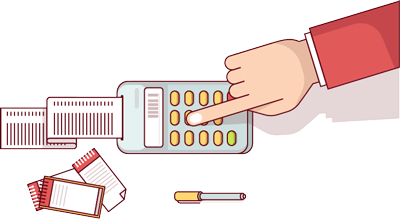الگوهای دانستن در مراقبت بالینی
مراقبت، از نظر واتسون (Watson, 1996)، جوهره و کانون اصلی عملکرد پرستاری است، با اینحال هیچ فرآیندی برای ارائه یک مراقبت جامع کافی نیست. مراقبت جامع و انسانی نیازمند به کارگیری اخلاقیات، عواطف، دلسوزی و شفقت، دانش، عقل و خرد، و عزم راسخ است (Fawcett & Desanto-Madeya, 2012). تجربه بیماران یکی از ارکان اصلی ارزیابی کیفیت مراقبت است (Doyle, Lennox, & Bell, 2013) و کیفیت مراقبت پرستاری از منظر بیماران، وابسته به ارتباطات پرستار، آگاهی دادن او، کمک به موقع و حمایت محیطی فراتر از عرف است (Edvardsson, Watt, & Pearce, 2017) اما شواهد نشان دهنده ی رضایت مندی متوسط بیماران از کیفیت مراقبت پرستاری است (Farahani, Shamsikhani, & Hezaveh, 2014)، به طوری که با وجود اعتماد زیاد بیماران به پرستاران، رضایت آن ها به دلیل عدم دریافت مراقبت کافی، کمتر از حد مطلوب است و گفته می شود شاید بتوان با استخدام پرستاران مجوز دار رضایت مندی بیماران را ارتقاء داد (Aiken et al., 2018). این در حالی است که سطح علمی تنها معیار تعیین کننده کیفیت مراقبت پرستاری نیست، زیرا مراقبت پرستاری اگر صرفاً بر پایه ی دانش عینی باشد، ممکن است امن نبوده، کیفیت پایین تری داشته و به جای شخص محور بودن، بیماری محور باشد (Lisa Carnago & Mast, 2015). به همین دلیل است که با اینکه اکثریت نیروی پرستاری شاغل در بیمارستان ها و مراکز درمانی ایران دارای مدارک دانشگاهی کارشناسی هستند (Niazi, Jahani, & Mahmoodi, 2016) اما حتی در مواردی که دانش کافی دارند، از ارائه مراقبت پیشگیرانه و مطلوب خودداری می کنند (Saifollahi, Bolourchifard, Borhani, Ilkhani, & Jumbarsang, 2016). در واقع می توان گفت، ارائه مراقبت با کیفیت، یک فرآیند خطی وابسته به یک پروتکل یا مهارت پرستاری نیست (Harrison, Blozis, Manning, Dionne-Vahalik, & Mead, 2019) و بنابراین، مدرک تحصیلی کارشناسی و بالاتر، سابقه کار بالا، مجوز پرستاری (RN) و حتی بار کاری کم و اشتغال در بیمارستان با تکنولوژی پیشرفته نیز، ضامن کیفیت مراقبت پرستاری نبوده و مواردی از ناتمام رها کردن برنامه مراقبت پرستاری، بسنده کردن به مراقبت های ضروری، بروز خطاهای دارویی، عفونت های بیمارستانی و سقوط از تخت مکررا مشاهده می شود (Lucero, Lake, & Aiken, 2010).
مراقبت، قلب پرستاری و ارتباط بین انسان با انسان است که با عشق، شفقت و بخشش همراه می باشد (Watson, 2008) اما وقتی پرستار، بیمار را یک شخص تلقی نکند و یا نسبت به صلاحیت و شایستگی خود و تأثیر آن بر بیمار بی تفاوت باشد، رفتار او نامراقبتی (uncaring) محسوب می شود که خود مانع بزرگی برای درک بیمار است (Halldórsdóttir & Hamrin, 1997). می توان گفت، بی تفاوتی نشانه ی بی علاقگی به شخص دیگر (بیمار) است که در بی احساسی (Insensitivity) سرد بودن (Coldness) و همچنین عدم انسانیت تجلی می یابد (Söderman, Rosendahl, & Sällström, 2018) نامراقبتی در رویارویی با بیماران، با محروم سازی (frustration)، کافی نبودن مراقبت و غفلت (ignoring ) همراه است. در حالی که مراقبت با امیدوار نگه داشتن، صرف زمان و انرژی بیشتر یا به اصطلاح (going the extra mile) همراه است (Cheruiyot & Brysiewicz, 2019).
Patterns of knowing in clinical care
According to Watson (1996), caring is the essence and central piece of nursing performance; still, there is no well-defined process for providing a holistic care. Holistic and humanistic care needs respecting ethics and emotions, showing sympathy, empathy, and perseverance, and using knowledge, reason, and wisdom (Fawcett and Desanto-Madeya, 2012). The patient’s experience is one of the pillars of assessing the quality of care (Doyle, Lennox, and Bell, 2013). The quality of nursing care from the patients’ viewpoint depends on the nurse’s communicational skills, informing the patient, providing timely support, and extending the support beyond the norms (Edvardsson, Watt, and Pearce, 2017). However, there are evidences that show a moderate level of satisfaction in patients with the quality of nursing care (Farahani, Shamsikhani, and Hazavey, 2014); so that despite the strong belief in nurses, patients’ satisfaction is below a desirable level due to the lack of an adequate care. It is said that patients’ satisfaction might be improved by registered nurses staffing (RN staffing) (Aiken et al., 2018). However, the academic knowledge is not the only factor in the quality of nursing care as nursing care only based on objective knowledge might be unsafe, of low quality, and disease-oriented rather than patient-oriented (Lisa Carnago and Mast, 2015). Therefore, while the majority of nursing staff in Iran hold a bachelors’ degree (Niazi, Jahani and Mahmoodi, 2016) and in some cases have the adequate knowledge, they fail to provide preventing and desirable care (Saifollahi et al., 2016). In fact, providing quality care is a not a linear process and subject to one protocol or nursing skill (Harrison et al., 2019). Therefore, having a university degree, long work experience, being a registered nurse, low workload, and working in well-equipped hospitals do not guarantee a quality nursing care. This is supported by the high rate of instances of neglecting a nursing care protocol, limiting cares to the essentials, pharmaceutical errors, hospital infection, and patients falling off the bed (Lucero, Lake, and Aiken, 2010).
Caring is the centerpiece of nursing and it is a relationship between two individuals accompanied with love, empathy and forgiveness (Watson, 2008). However, nurses job is called “uncaring” when they do not perceive the patient as a person and are inconsiderate about his/her competence and the effect of their job on the patient. Uncaring is a great obstacle for the nurse to understand the patient (Halldorsodottie and Hamrin, 1997). Inconsideration is a sign of lack of interest to somebody (patient) that appears as insensitivity, coldness, and lack of humanity (Soderman, Rosendahl and Sallstrom, 2018). Uncaring is also featured with depriving, inadequate care, and ignoring. On the other hand, caring is featured with giving hope, spending more time and energy, or going the extra mile (Cheruiyot an Brysiewicz, 2019).
ادامه مطلب









